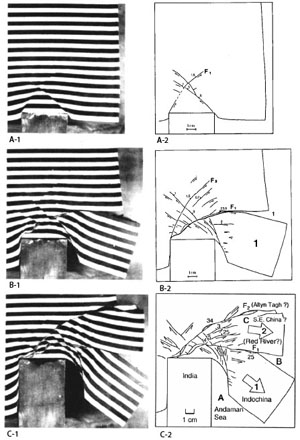| |||||||
|
|
|||||||
|
|
|||||||
| Slip Line Theory | |||||||
|
Slip lines and slip planes have been used to rationalize fault patterns in Earth's crust (Aydin, 1973; Cummings, 1976; and Tapponnier and Peltzer, 1982). Among the slip line analogies, the one proposed by Tapponnier et al. (1982) is perhaps the best known. By a rigid indenture, they produced two sets of slip surfaces (Figure 1A) which gradually evolved to a pattern that resembles the large scale fault systems in central Asia and southern China (Figure 1C) formed by the collision of the Indian plate with the Eurasian plate. | |||||||
| Reference: |
|||||||
| Aydin, A., 1973 Cummings, D., 1976 Tapponnier, P., Peltzer, G., Ledain, A.Y., Armijo, R., Cobbold, P., 1982 |
|||||||
|
Readme | About Us | Acknowledgement | How to Cite | Terms of Use | Ⓒ Rock Fracture Knowledgebase |
|||||||
